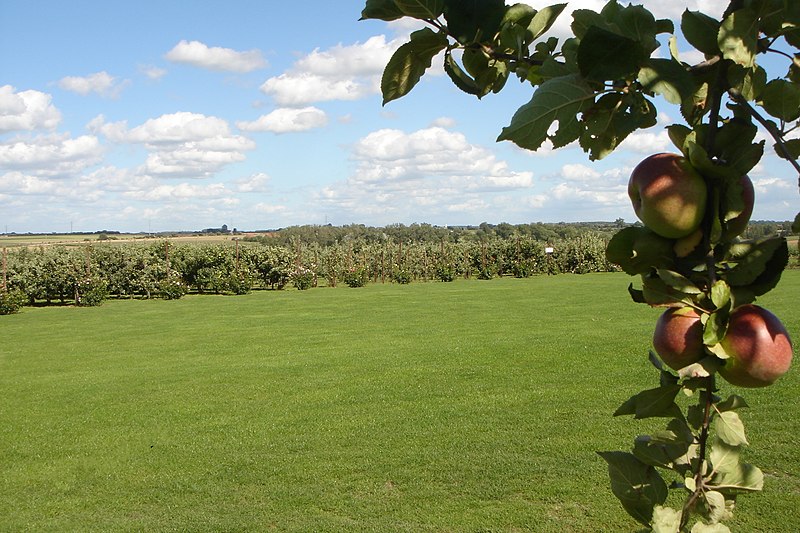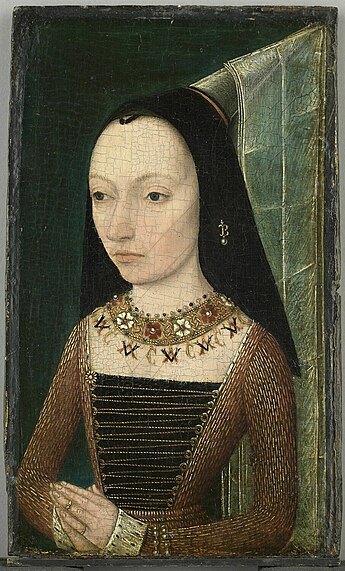 |
| Sandal Castle from whence Richard of York rode out to give battle at Wakefield |
Changing Circumstances
In England the
Yorkist fight to the death with Margaret and her supporters was dealt a
grievous blow with the death of Richard of York on the penultimate day of 1460 at
the battle of Wakefield[i]. The Lancastrian army returned south
leaving a thirty mile wide swathe of destruction in their wake in;
‘A whirlwind from the
north….a plague of locusts covering the whole surface of the earth.’[ii]
Following
the news Edward, now Duke of York in his father’s stead, prepared to return
home from Calais, to reclaim the York family lands. The Lancastrians’ success
persuaded the anti-Burgundian faction at the French court that now was a good
time to attack Burgundy while their allies were laid low.
Cloistered in
Genappe with Charles of Charolais, the Dauphin was waiting for his father to
die. His spies at the French court kept him informed of his father’s doings.
Louis was secretly allying himself with the Earl of Warwick and Francesco Sforza, Duke of Milan. Sforza was hoping to persuade the English to attack France
and divert them from attacking his territories.
 |
| Countryside around le Quesnoy |
In January 1461
Charles of Charolais decided the time was ripe to attack his enemies, Antoine
and Jean de Croy. Charles levelled charges that the de Croys were spreading a
rumour that Charles was intending to hand Louis over to Charles VII. He
demanded that Philip take action against the pair of them. Tired and ill, Philip
tried to stop the quarrel and the government of Burgundy was paralysed by the
fight.
Unable to
look after himself, Philip called Isabella to his side in Abbeville once again
and she prayed for his recovery as the doctors’ remedies were not working.
Isabella ordered the bells of Abbeville to be rung continuously and exhorted
the citizens to pray for the duke. By the end of January Philip had recovered
sufficiently to drink almond flavoured milk and broth. At which point Isabella
returned to her son, daughter-in-law and granddaughter at le Quesnoy[iii].
A Brace of New Kings
 |
| George Plantagenent |
It was not
until late January that Edward of York and the Earl of Warwick sailed for
England with two thousand English and Burgundian soldiers On 4th
March the English parliament proclaimed Edward of York the rightful king of
England[iv]. Edward and his army
chased after the Lancastrians, meeting and defeating them at the battle of Towton on 29th March 1461. Margaret, Henry VI and
Prince Edward fled into exile[v].
Edward’s
brothers George and Richard came to stay with Isabella in
Brussels while the excitement was ongoing in England. She treated the two young
men to the splendours of the Burgundian court while leaving no stone unturned
to persuade their brother of the advantages of an Anglo-Burgundian alliance. Warwick,
meanwhile, was pressing for an alliance with France.
There was
turmoil in the relations between Philip and his royal guest and the Duke of
Milan’s envoy Prospero di Camogli commented;
‘Every day the danger grows
that this hostility will uncover itself. On the side of the Dauphin only his
needs hold it hidden; on the side of the Duke, only the opportunity offered by
the Dauphin’s presence if war with France should break out.’[vi]
On 22nd
July 1461 Louis’ greatest wish was granted; his father died and he finally
became Louis XI, King of France. He departed for France without a word of
gratitude to his host and hostess. As king Louis was to continue the anti-Burgundian
policies he had pressed for during his father’s reign despite the support he
had received from Philip.
To appease
Philip he appointed the post of Grand Master of the Royal Household to Antoine
de Croy. Philip and Isabella attended Louis’ coronation in Rheims and then
followed the court to Paris for the coronation banquet where Philip far
outshone the habitually quietly dressed king.
Disputes
I
n July 1462
one of Philip’s servants, Jehan Coustain, premier
valet de chambre, was accused of attempting to poison Charles. Antoine de
Croy was responsible for Coustain’s elevation[vii]. It is not known whether
the accusation was true or false but Charles used the accusation to bring down
one of de Croy’s men, leaving the de Croys believing that Charles would stop at
nothing to ruin them.
 |
| Philip the Good |
Louis was
trying to create an Anglo-French alliance and persuaded Philip to smooth his
path. He also used Warwick’s services to get into Edward’s good books. In the
autumn of 1463 a meeting between the old enemies was arranged at St Omer. Isabella
was kept away from the meeting which ended in a one year truce. Louis also
hoped to inveigle Edward into marrying a French princess.
Louis’
opinion of Philip was very unflattering;
‘He was a prince who always
had his own way, never sharing power with a companion or equal, and that he was
not of great intellect.’[viii]
He managed
to persuade Philip to sell him the lands on the Somme granted by Charles VII;
Charles was livid that his father had sold off some of his inheritance and by
October arguments between father and son had reached fever pitch. Charles departed
for his lands in Holland until summonsed back to court by his father.
Isabella was
concerned that Louis was distracting Philip from his crusade; It can only have
been piety ruling Isabella’s actions, as a trip to the Holy Land by an sick old
man, at the end of his life, would not have been beneficial. Louis’ plans to
marry off Edward was stymied when, in May 1464, the English king married Elizabeth Woodville, an action that caused a breach
between him and his chief supporter Warwick.
Deaths in the Family
 |
| Margaret of York |
The
following year saw the death of Countess Isabella on 25th September
1465. Within weeks Isabella had sent an envoy to England to discuss the
possibility of a marriage between her son and Margaret of York, sister of Edward IV. Louis XI tried
to stop the marriage negotiations by offering his daughter Anne, then four years old, as a bride[ix]. The French offer was
refused.
Isabella was
residing at La Motte-au-Bois when Philip died alone on 15th June
1467 at the Princehof. The last few years the married couple had spent apart,
except for when Philip was ill. Charles was in Ghent and he was immediately
sent for. Isabella did not return to Bruges until 18th June to find
her son bewailing the fact that he had left his father alone in his last hours.
On the 28th
the town of Ghent challenged Charles’ right to rule and the following morning
Charles visited the town where he was faced with demands to overturn the
constraints forced on them by his father. Charles lost his temper and slapped
one of the town’s representatives. Other towns flared up into violence and
Charles responded with draconic severity. Isabella attempted to ameliorate her
son’s brutal responses to opposition, not always successfully.
Charles was determined
to complete the English alliance by his marriage to Edward IV’s sister and on 9th
July 1468 Margaret of York became his third wife. His new wife retained her
right to the English throne and Edward promised 200,000 crowns[x] dowry. Edward proclaimed
that his sister was to marry;
‘One of the mightiest
princes of the world that beareth no crown.’[xi]
After the
wedding Isabella returned to La Motte-au-Bois where she supported a diplomatic
resolution to the conflict between France and Burgundy. Isabella’s attempts to
work round the problems caused by Charles’ violent reactions to events were
often stymied by her son.
The plague
had been prevalent throughout Picardy, Brabant Flanders and Hainault throughout
the summer and autumn. When Charles visited his mother in October he was
concerned about her appearance. She died in her son’s arms on 17th
December 1471.
Philip might
have appreciated his dynasty’s end even if Isabella would not have done. The
reckless Charles the Bold died young, leaving his duchy to his daughter Mary
who married Maximilian I, the Holy Roman Emperor.
Bibliography
The Hundred
Years War – Alfred Burne, Folio Society 2005
Edward IV –
Keith Dockray, Fonthill Media Limited 2015
Wars of the
Roses – John Gillingham, Weidenfeld Paperbacks 1990
The Reign of
Henry VI – RA Griffiths, Sutton Publishing Ltd 1998
The
Fifteenth Century – EF Jacob, Oxford University Press 1997
Louis XI –
Paul Murray Kendall, Sphere Books Ltd 1974
Margaret of
Anjou – Helen E Maurer, Boydell Press 2003
Isabel of
Burgundy – Aline S Taylor, Madison Books 2001
Philip the
Good – Richard Vaughan, Boydell Press 2014
Charles the
Bold – Richard Vaughan, Boydell Press 2002
www.wikipedia.en
[ii]
Wars of the Roses - Gillingham
[iii]
The duke’s summer residence
[iv]
Parliament claimed that Henry VI had authorised the attack on Richard of York,
who was acting as Protector of the Realm. By doing so Henry had broken his oath
and forfeited his right to be king
[v]
In 1470 Warwick, who had quarrelled with Edward, forced a reversal of the
situation, sending Edward into exile again and returned Henry VI to his throne.
[vi]
Louis XI - Kendall
[vii]
Coustain was deep in his confidence
[viii]
Isabel of Burgundy - Taylor
[x]
In 2015
the relative: historic standard of living
value of that income or wealth is £136,800,000.00 labour earnings of that income or wealth is £1,222,000,000.00 economic status value of that income or wealth is £4,752,000,000.00 economic power value of that income or wealth is £84,910,000,000.00 www.measuringworth.com
[xi]
Isabel of Burgundy - Taylor
Edward IV was a randy toerag who swived his way across Britain and had already gone through a kind of marriage ceremony before he bigamously married Elizabeth Woodville. He wasn't interested in dynastic marriage, his brain resided two feet lower than his head.
ReplyDelete